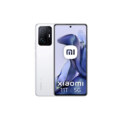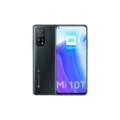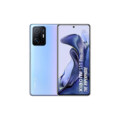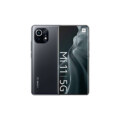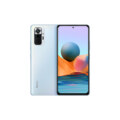Xiaomi 13T




Specs
General
| Device Type | Xiaomi Redmi Phone |
| Announced | 26 September, 2023 |
| Released | 26 September, 2023 |
| Status | Available |
Design
| Dimensions | 162.2 x 75.7 x 8.5 mm |
| Weight | 193 g |
| Protection | Glass front (Gorilla Glass 5), glass back or silicone polymer back, plastic frame |
| Colors | Alpine Blue, Meadow Green, Black |
Display
| Refresh Rate | 144 hz |
| Display Type Display Technology => A number of display technologies and types used in mobile phones => TFT (Thin Film Transistor), IPS (In-Place Switching), OLED (Organic Light Emitting Diode), AMOLED (Active-Matrix Organic Light-Emitting Diode), Super AMOLED (an even advanced version of AMOLED), Resistive Touchscreen (Resistive touchscreens contain two layer of conductive material with a very small gap between them which acts as a resistance), Capacitive Touchsceen (Capacitive touchscreen technology consists of a layer of glass coated with a transparent conductor) | AMOLED |
| Size | 6.67 inches |
| Resolution | 1220 x 2712 pixels |
| Display Colors Display Colors is refers to the number of different shades of colors that the screen is capable of displaying => 64K colors, 256K colors and 16 million colors, Obviously 16M is highest available range of colors and better than others. | 68B |
| Pixel Density Pixel Density (PPI) is refers to the concentration of pixels on a particular display, measured in pixels per inch (ppi). Pixel density is calculated by dividing the diagonal pixel resolution of a display by its diagonal size, higher pixel density better display quality. | ~ 446 ppi |
| Touch Screen | Capacitive Touchscreen, Multitouch |
| Display Protection Display Protection => Gorilla Glass is a special alkali-aluminosilicate glass shield with exceptional damage resistance that helps protect mobile displays from scratches, drops, and bumps of everyday use, It is always better to go for a smartphone with Gorilla Glass for that added protection and peace of mind. | Corning Gorilla Glass 5 |
| Features | Dolby Vision, HDR10+, 1200 nits (HBM), 2600 nits (peak) |
| Secondary Display | No |
Camera
| Front Camera | 20 MP, f/2.2, (wide) |
| Camera Setup | Triple |
| Main Camera Camera is able to capture photographs and usually videos, The most important characteristics of a camera are the resolution (measured in megapixels), lens focus type (fixed or automatic), higher megapixel cameras are known to capture higher quality photos, but not always a good measurement of the photos quality. |
50 MP, f/1.9, 24mm (wide) 50 MP, f/1.9, 50mm (telephoto) 12 MP, f/2.2, 15mm (ultrawide) |
| Video | 4K@30fps (HDR10+), 1080p@30/60/120fps, gyro-EIS |
| Camera Features | Leica lens, HDR, panorama |
| Flash Flash Light => There is commonly two types of flash lights are used in camera mobile phones, LED Flash (LED flash offers lower power consumption with drive circuitry that takes up very little room, LEDs can be strobed faster than any other light source), Xenon Flash (xenon flash produces an extremely intense full-spectrum white light for a very short duration) | LED flash |
Hardware
| Operating System OS => Every computer system run on a base software called Operating System (OS). Operating System controls all basic operations of the computer (such as smartphone, PDAs, tablet computers and other handheld devices). The Operating System allows the user to install and run third party applications (apps), apps are used to add new functionality to the device. | Android 13 |
| Chipset Chipset is a group of integrated circuits designed to perform one or a more dedicated functions, often with real time computing constraints, Popular smartphones are equipped with more advanced embedded chipsets that can do many different tasks depending on their programming. | Mediatek Dimensity 8200 Ultra |
| CPU CPU (Central Processing Unit) mostly known as processors, CPU processes instructions in order to carry out certain functions that make your device operate properly. Processors are often described as the brain of computers, smartphones and tablets, Smartphones and tablets rely on processors to carry out their every task, Processors are an incredibly important factor in selecting any type of computing device, including your smartphone. | Octa-core (1 x 3.1 GHz Cortex-A78 + 3 x 3.0 GHz Cortex-A78 + 4 x2.0 GHz Cortex-A55) |
| Architecture | 64 bit |
| Fabrication | 4 nm |
| GPU GPU (Graphics Processing Unit) is a single-chip processor designed to rapidly manipulate and alter memory to accelerate the creation of images in a frame buffer intended for output to a display, This includes things such as lighting effects, object transformations, and 3D motion. | Mali-G610 MC6 |
| RAM (Memory) RAM (Random Access Memory) is a type of computer memory that can be accessed randomly, any byte of memory can be accessed without touching the preceding bytes that allows information to be stored and accessed quickly from random locations. RAM is the most common type of memory found in computer systems, smartphones, tablets and other electronic devices. | 12 GB |
| Internal Storage Internal Storage is a data storage space (flash memory) mostly used in smartphones, tablets and other electronic devices where operating system, apps, music, photos, videos, files and other user data Is stored. | 256 Built-in |
| Card Slot Memory Card Slot is a special slot for inserting a memory card. Memory cards allow you to expand the phone's built-in memory, A memory card (sometimes called a flash memory card or a storage card) is a small storage medium used to store data such as text, pictures, audio, and video, for use on small, portable or remote computing devices such as mobile phones, mp3 players, digital cameras. | |
| Sensors Sensors are electronic components that detects and responds to some type of input from the physical environment. The specific input could be light, heat, motion, moisture, pressure and location, The output is generally a signal that is converted to use in computing systems, a location sensor, such as a GPS receiver is able to detect current location of your electronic device. | Accelerometer, Barometer, color spectrum, Compass, Fingerprint (under display, optical), Gyro |
Network
| SIM TYPE SIM (Subscriber Identity Module) is a small card that contains mobile network subscriber's account information. This allows the phone using the card to attach to a mobile network. The SIM card is most commonly associated with GSM and UMTS mobile networks. Moving a SIM card from one phone to another allows a subscriber to switch mobile phones without having to contact their mobile network carrier. SIM cards can also be used by a phone to store limited amounts of data, such as phone numbers and text messages. | Nano SIM |
| SIM Technology | Dual Sim, Dual Standby (Nano-SIM) |
| 2G Network | GSM 850 / 900 / 1800 / 1900 |
| 3G Network | HSDPA 850 / 900 / 1700(AWS) / 1900 / 2100 |
| 4G Network | LTE band 1(2100), 3(1800), 7(2600), 8(900), 20(800) |
| 5G Network | SA/NSA/Sub6 |
Multimedia
| FM Radio | |
| Stereo Speakers | YES |
| Loudspeaker | YES |
| Audio Jack | NO |
| Audio Features | 24-bit/192kHz Hi-Res audio |
Connectivity
| Wi-fi Wi-Fi is a popular wireless networking technology using radio waves to provide high-speed network connections that allows devices to communicate without cords or cables, Wi-Fi is increasingly becoming the preferred mode of internet connectivity all over the world. | Wi-Fi 802.11 a/b/g/n/ac/6, dual-band |
| Bluetooth Bluetooth is a wireless communications technology for exchanging data between mobile phones, headsets, computers and other network devices over short distances without wires, Bluetooth technology was primarily designed to support simple wireless networking of personal consumer devices. | v5.4 with A2DP, LE |
| GPS GPS The Global Positioning System is a satellite-based radio navigation system, GPS permits users to determine their position, velocity and the time 24 hours a day, in all weather, anywhere in the world, In order to locate your position, your device or GPS receiver must have a clear view of the sky. | GPS (L1+L5), GLONASS (G1), GALILEO (E1+E5a), QZSS (L1+L5), NavIC (L5), BDS |
| USB | USB Type-C 2.0, OTG |
| EDGE EDGE (Enhanced Data GSM Environment) is a wireless network technology generally considered the next step in the 2G network offers data transfer rates up to four times faster than ordinary GSM networks, Generally, EDGE is used for the purpose of wireless data transfer, such as sharing pictures and videos or browsing the Internet via a mobile phone connection. | |
| GPRS GPRS (General Packet Radio Service) is a packet oriented mobile data service on the 2G and 3G cellular communication system's global system for mobile communications (GSM), Generally, GPRS is used for the purpose of wireless data transfer, such as sharing pictures and videos or browsing the Internet via a mobile phone connection. | |
| Speed | 3G (HSPA 42.2/5.76 Mbp), LTE-A, 5G capable |
| Wi-fi Hotspot | |
| NFC NFC (Near field communication) is a set of standards for smartphones and similar devices to establish peer-to-peer radio communications with each other by touching them together or bringing them into proximity, usually no more than a few inches. |
Features
| Messaging | SMS(threaded view), MMS, Email, Push Mail, IM |
| Web Browser Web Browser => a web browser is a software application used to locate, retrieve and display content on the World Wide Web, including Web pages, images, video and other files, The primary function of a web browser is to render HTML, the code used to design or markup webpages. | HTML5 |
| Games | Built-in + Downloadable |
| Torch |
Battery
| Battery Type Battery Type => Cell phones run on various kinds of batteries depending on the manufacturer, phone size or shape and features. There are basically four types of cell phone batteries => Lithium Polymer, Lithium Ion, Nickel Metal Hydride and Nickel Cadmium. | Li-Ion (Lithium Ion) |
| Capacity Battery Capacity is a measure (typically in Amp-hr) of the charge stored by the battery, and is determined by the mass of active material contained in the battery. The battery capacity represents the maximum amount of energy that can be extracted from the battery under certain conditions. | 5000 mAh |
| Placement | Non-removable |
| Wireless Charging Wireless Charging (Inductive Charging) uses an electromagnetic field to transfer energy between two objects. This is usually done with a charging station. Energy is sent through an inductive coupling to an electrical device, which can then use that energy to charge batteries or run the device. | No |
| Extra |
Fast charging 67W wired, PD3.0, QC4 100% in 42 min (advertised) |
Xiaomi 13T: Detailed Review
Introduction:
The Xiaomi 13T, released in 2023, aims to solidify Xiaomi’s reputation for delivering premium features at competitive prices. Equipped with a powerful processor, advanced camera system, and a high-refresh-rate display, the Xiaomi 13T is designed to appeal to users seeking flagship-level performance without the premium price tag. This review delves into its design, display, performance, camera, battery life, software, and more, concluding with a summary of pros and cons.
Specifications at a Glance
- Display: 6.67-inch AMOLED, FHD+ (2400 x 1080), 144Hz refresh rate
- Processor: MediaTek Dimensity 8200-Ultra
- RAM: 8GB/12GB
- Storage Options: 256GB, 512GB
- Rear Cameras: 50 MP (main, f/1.9), 12 MP (ultra-wide, f/2.2), 8 MP (telephoto, f/2.0)
- Front Camera: 20 MP (f/2.0)
- Battery: 5000 mAh with 67W fast charging
- Operating System: MIUI 14 based on Android 13
- Dimensions: 162.2 x 75.7 x 8.5 mm
- Weight: 202 grams
Design and Build Quality
Aesthetics:
The Xiaomi 13T combines a sleek, modern design with a polished glass back and an aluminum frame. The phone feels premium in hand, with rounded edges and a comfortable grip. It is available in several colors, including Black, Blue, and Green, catering to different aesthetic preferences.
Durability:
The front is protected by Corning Gorilla Glass 5, offering decent resistance against scratches and minor drops. The device is rated IP68 for dust and water resistance, making it capable of withstanding submersion in water for up to 30 minutes.
Ergonomics:
At 8.5 mm thick and weighing 202 grams, the Xiaomi 13T strikes a balance between a substantial feel and ease of use. Its large 6.67-inch display makes it a bit unwieldy for one-handed use, but it remains manageable for most users. The fingerprint sensor is embedded under the display for easy access, and facial recognition is quick and accurate.
Overall:
The Xiaomi 13T’s design is sleek and premium, offering solid durability with an IP68 rating. It feels like a flagship device without the flagship price.
Display
Specifications:
- Size: 6.67-inch AMOLED
- Resolution: 2400 x 1080 (FHD+)
- Refresh Rate: 144Hz
- HDR Support: HDR10+
- Brightness: 1200 nits peak brightness
Performance:
The 6.67-inch AMOLED display on the Xiaomi 13T delivers sharp, vibrant visuals with deep blacks and punchy colors. The 144Hz refresh rate makes for a fluid experience, especially during gaming or scrolling through apps. HDR10+ support ensures excellent contrast and brightness, making it ideal for watching high-definition content.
True Color Accuracy:
With a wide color gamut and fine-tuned color accuracy, the Xiaomi 13T’s display is great for viewing photos, videos, and even graphic-intensive tasks like editing.
High Refresh Rate:
The 144Hz refresh rate enhances the overall experience, especially in gaming and fast-paced content. It can dynamically adjust to lower refresh rates to save battery when higher speeds are unnecessary.
Overall:
The Xiaomi 13T offers one of the best displays in its class, providing smooth performance, vibrant colors, and excellent brightness for outdoor visibility.
Performance
Hardware:
- Processor: MediaTek Dimensity 8200-Ultra
- RAM: 8GB/12GB
- Storage: 256GB, 512GB UFS 3.1
Performance Evaluation:
Powered by the MediaTek Dimensity 8200-Ultra, the Xiaomi 13T delivers top-tier performance in its price segment. Multitasking, gaming, and app launching are all smooth, thanks to the 8GB/12GB of RAM. It handles intensive games like PUBG and Genshin Impact with ease, with minimal heating thanks to the phone’s efficient cooling system.
AI and Machine Learning:
The Dimensity 8200-Ultra supports advanced AI and machine learning applications, optimizing everything from camera performance to battery management.
Benchmark Scores:
- Geekbench 5: ~950 (single-core), ~3600 (multi-core)
- Antutu: ~820,000
Overall:
The Xiaomi 13T is a performance powerhouse for its price, handling high-end gaming, multitasking, and AI-driven applications effortlessly.
Camera
Rear Cameras:
- 50 MP (wide, f/1.9) with OIS
- 12 MP (ultra-wide, f/2.2)
- 8 MP (telephoto, f/2.0) with 3x optical zoom
Front Camera:
- 20 MP (f/2.0)
Camera Performance:
The Xiaomi 13T features a versatile triple-camera setup with a 50 MP main sensor, delivering excellent photos with rich detail and dynamic range in well-lit conditions. Low-light performance is enhanced by the OIS (Optical Image Stabilization) on the main sensor, which helps produce sharp and clear images in challenging lighting.
The 12 MP ultra-wide camera captures broader scenes with decent detail, although it struggles slightly in low-light situations. The 8 MP telephoto camera offers a 3x optical zoom, allowing for crisp close-up shots.
Daylight Photography:
Photos in daylight are sharp, vibrant, and well-detailed. AI Scene Detection helps in optimizing colors, making them more vivid without looking unnatural.
Low-Light Photography:
The Night Mode significantly improves low-light shots, reducing noise while retaining good color accuracy and detail.
Video Recording:
The Xiaomi 13T supports 4K video recording at 60fps. Stabilization works well, especially during motion-heavy recording, though it’s not as refined as flagship-level systems.
Selfie Camera:
The 20 MP front camera produces clear, well-lit selfies with good color reproduction. Portrait mode works well, offering decent background blur and edge detection.
Overall:
The camera setup on the Xiaomi 13T delivers excellent versatility and quality, making it one of the stronger performers in its segment, especially in daylight and moderate low-light conditions.
Battery Life
Specifications:
- Battery Capacity: 5000 mAh
- Charging: 67W wired fast charging
Performance:
The 5000 mAh battery comfortably lasts a full day with moderate to heavy usage. The efficient Dimensity 8200-Ultrachipset ensures the battery life is maximized during both gaming and regular use. For more moderate users, the Xiaomi 13T can stretch into a second day.
Fast Charging:
With 67W fast charging, the phone can go from 0% to 100% in about 45 minutes, making it incredibly convenient for users who need a quick top-up during the day.
Overall:
Battery life on the Xiaomi 13T is excellent, providing long-lasting endurance for all-day use, and fast charging ensures minimal downtime.
Software
Operating System:
- MIUI 14 based on Android 13
User Experience:
MIUI 14 on the Xiaomi 13T provides a feature-rich experience with smooth performance and plenty of customization options. While some bloatware comes pre-installed, most of it can be removed, and MIUI’s clean interface makes it easy to navigate.
Software Features:
- AI Enhancements: MIUI 14 uses AI optimizations for tasks like resource management, ensuring smooth performance.
- Game Turbo Mode: Enhances gaming by optimizing performance and reducing distractions.
- Regular Updates: Xiaomi has committed to providing regular software updates, ensuring the device stays up-to-date with new features and security patches.
Overall:
MIUI 14 offers a polished and customizable experience, although it can feel a bit heavy for those preferring a more stock Android experience.
Pros & Cons
Pros:
- Impressive Display: The 144Hz AMOLED display provides smooth visuals and vibrant colors, ideal for gaming and media consumption.
- Powerful Performance: The Dimensity 8200-Ultra chipset handles gaming and multitasking effortlessly.
- Versatile Camera System: The 50 MP main camera excels in daylight photography and offers good low-light performance.
- Long Battery Life: The 5000 mAh battery comfortably lasts a full day, and 67W fast charging is a welcome addition.
- Premium Build and Design: The IP68 rating and sleek design make the phone feel premium.
Cons:
- No Wireless Charging: Despite its premium features, the Xiaomi 13T lacks wireless charging.
- Software Bloat: MIUI 14 includes some bloatware, though it can be removed.
- Telephoto in Low-Light: The telephoto lens struggles in low-light conditions compared to the main sensor.
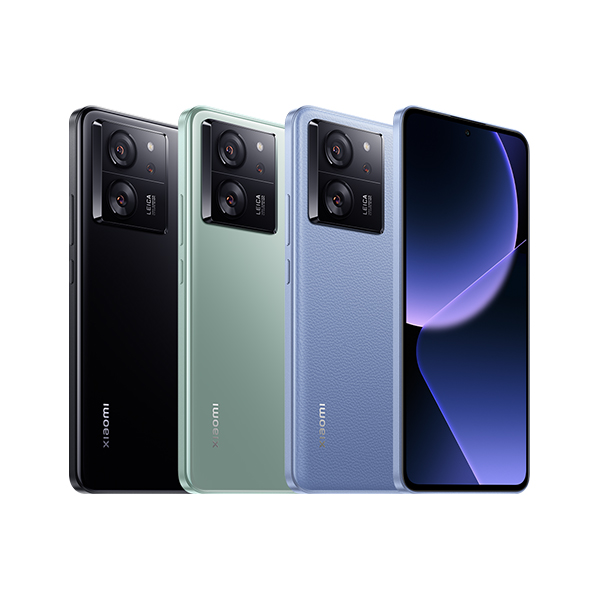
Conclusion:
The Xiaomi 13T is an excellent all-around smartphone offering high-end performance, a vibrant display, and a versatile camera system at a competitive price. While it has some minor drawbacks like the lack of wireless charging and some software bloat, it remains one of the best options for users seeking flagship-level features
Review
Disclaimer Note
All prices in Pakistan is updated daily from the price list provided by local shops and dealers but we can not guarantee that the information / price on this page is 100% correct (Human error is possible), always visit your local shop for exact cell phone cost & rate.

